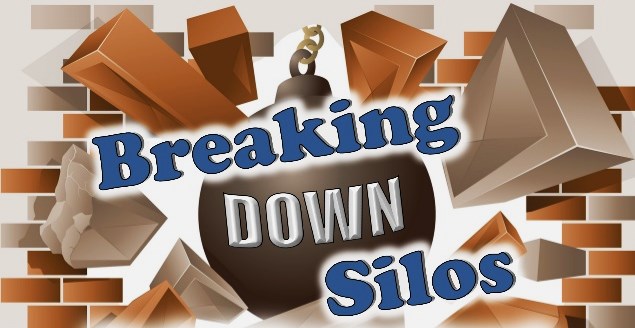 Photo Credit: Flickr, John Kless
Photo Credit: Flickr, John Kless
What would we do during these days of COVID-19 without FaceTime, Zoom meetings, Microsoft Teams, or Skype?! Sheltering at home, working from home, and social distancing have all drawn us into more of a solitary work and life. Having these online conversation opportunities keeps our daily lives open to those we wouldn’t otherwise see. Unfortunately just as meetings in real life as well as large family gatherings can exhaust us, so can the electronic facsimiles.
We want the good of them, and we sure don’t want to burnout on them before our stint with the Coronavirus is over.
Thankfully there are clinicians, creatives, and other thought leaders out there who are keeping online meetings fresh and inviting.
Psychologist Steven Hickman has written an incredibly insightful article on Zoom fatigue. Here are some of his observations:
[Related to his various Zoom meetings during COVID-19] “I have felt joy arising to see the faces and hear the voices of people whose faces and voices I first encountered when we were breathing the same air, standing in the same physical space, each (in Dan Siegel’s term) “feeling felt” by the other. And so it was nice to be with them electronically in this age of social distancing and sheltering in place.
And that was it, it was nice. I’ve been so busy lately that I thought perhaps I was just fatigued. But the more it happens, the more I realize that I end up feeling both connected but disconnected to these dear people.”
“…when we start to be over-stimulated by extraneous data that we haven’t had to process in the physical world [all the faces on a Zoom meeting, the pets, the background, our own fiddling with phone or other outside the screen’s view], each new data point pushes us just a little bit farther away from the human-to-human connection that we all crave and appreciate.“
“Italian management professor Gianpiero Petriglieri recently tweeted ‘It’s easier being in each other’s presence, or in each other’s absence, than in the constant presence of each other’s absence.’“
Zoom Exhaustion Is Real. Here Are Six Ways to Find Balance and Stay Connected – Steven Hickman
Dr. Hickman then offers 6 interventions to boost the benefit of these online meetings while dissipating their down-side:
-
- Take a few moments before clicking “Start” to settle and ground your attention. [My note: I find this so helpful because otherwise we are rushing into an online meeting, as if we’re running late for an in-person meeting. All the emotions and some of the guilt of being late.]
- Take the time to truly greet whoever is in the room with your full attention—offer your attention to each face that appears (if the group is not too big). Give yourself a moment for each person to make an impression on you, and “take in the good” as Rick Hanson would say. Give yourself an opportunity to feel what it feels like to be in the presence of another. [My note: I LOVE his reminder of mindfulness. We struggle with truly being present with people…in the moment. Good word.]
- Choose “speaker view.” In Zoom, one can choose Speaker View or Gallery View. [My note: I didn’t notice before that a “speaker view” is available. I love seeing all the faces, but maybe they can be distracting as well. Something to think about, especially for a work or content meeting.]
- Resist the urge to multitask. I need to let go of a bit of “efforting” and let my attention rest more lightly and lovingly on what (and who) is before me. [My note: This multitasking adds to our “Zoom fatigue” when we are trying to get more done than is reasonably possible and stay tuned into what’s going on in the online meeting. We may need to look away or focus more lightly on the screen, but multitasking will take away from our experience of those in the meeting.]
- Try to take measured breaks between sessions.
- And finally, remind yourself periodically that this is a new place between presence and absence that we will have to learn how to accommodate as we go forward into the uncertain future. It is both better than absence…and not quite as resonant as presence.
Thank you, Dr. Hickman, for this excellent piece of counsel.
What counsel do you have to keep online meetings engaging and pleasurable for those in attendance? Please comment below.
In my experiences of late with video meetings, we have tried to keep things rolling in terms of content and invite the addition of humor/play if it doesn’t already exist. Game nights came even be planned as online meetings. Family dinners, coffee breaks, teatimes, or happy hours can also be orchestrated via Zoom or one of the other platforms. Time limits are helpful. Chatroom groupings as part of a larger online meeting are helpful. One friend of ours actually added a dressup/costume element to his video meetings.
Online meetings should be just part of our arsenal of tools to stay in touch with each other. It’s way too early in this historical season for us to grow weary of them. I am grateful and will continue to be…let’s help each other to keep them beneficial for all involved…whether it’s two people or a large roomful. [Our son who is an essential worker and therefore unable to visit us because of his potential exposure to COVID-19 at work. So grateful to see him at least this way.]
[Our son who is an essential worker and therefore unable to visit us because of his potential exposure to COVID-19 at work. So grateful to see him at least this way.]
6 Pro Tips for Overcoming Zoom Meeting Fatigue – Kelsey Ogletree
I’ll Be Right Back. How to Protect Your Energy During Zoom Meetings – Elizabeth Grace Saunders
6 Tops For Avoiding Zoom Fatigue in the Age of COVID-19 – Leah D. Schade



